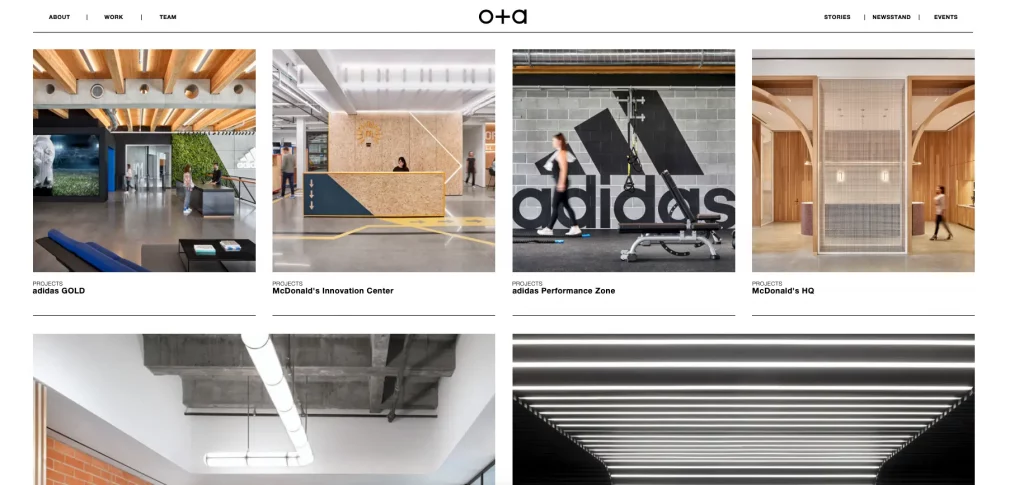Table of Contents
For an interior designer, crafting beautiful and functional spaces is only a part of the job. To build a successful business, one needs to establish a strong brand identity that sets them apart from the competition.
Now, a brand identity is not only about the logo or color scheme; it covers everything from the company’s mission and personality to the marketing strategy and customer experience.
In today’s crowded marketplace, where consumers have endless choices and are bombarded with advertisements, having a strong brand identity is critical. It helps your business to stand out, attract the right clients, and build long-term relationships.
In this blog, we’ll explore the different components involved in building a strong brand identity.
Defining your brand values and mission
Before you can build a strong brand identity for your interior design business, it is important to define your brand values and mission.
Why?
Because your brand values inform everything you do. They are your guiding principles. They determine everything from the design choices you make to the way you interact with your customers.
The mission, on the other hand, is the reason you exist as a business and the impact you hope to have on the world. A sample mission statement could be –
“To create beautiful, functional spaces that enhance our clients’ lives and reflect their unique style and personality. We are committed to delivering exceptional customer service, using sustainable materials and practices, and staying at the forefront of design trends and innovations.”
Importance of defining brand values and missions
- It helps in establishing a clear sense of purpose and direction for your business.
- It makes it easier to make strategic decisions and prioritize your time and resources.
- It can help attract like-minded clients who share your values and mission.
- It helps to differentiate yourself from competitors and build a loyal following of clients who trust and respect your work.
How to define your brand values and mission?
Step 1: Consider your own values
Kickstart the process by thinking about the different values that are important to you as an individual. In other words, find out what motivates you. It could be creativity, authenticity, integrity, excellence, to name a few. Write them down and make sure that they resonate well with your business goals.
A key question to ask at this step: What motivates you?
Step 2: Consider your ideal client
Next, define your ideal customer profile and understand their values, needs, and expectations. You need to focus on what type of client you want to attract and what values they share with you. This will help in tailoring your brand values and mission so that it resonates with those kinds of clients.
A key question to ask at this step: Who are your ideal clients?
Step 3: Consider your goals
Your business goals define what you want to achieve in the short and long-term. These could be financial targets, expanding your services, increasing brand awareness, or developing partnerships with other businesses. The goals should be clear and measurable. The brand values and mission you choose should help in reaching these goals in the defined period.
A key question to ask at this step: What do you wish to achieve?
Step 4: Create your brand values and mission
By considering your personal values, goals, and ideal clients, identify 3-5 core values and mission statements. Ultimately, the choices you make should help in creating a meaningful and impactful brand.
A key question to ask yourself at this step: Are my brand values creating an impact?
Step 5: Communicate your brand values and mission
Now that you have defined your brand values and mission, it’s important to communicate them clearly and consistently across all channels. You could pick a channel that is convenient for your website and at the same time where your clients are most active. It could be your website or even social media channels. Make sure your messaging is authentic, compelling, and aligned with your brand identity.
A key question to ask yourself at this step: Where can I communicate my brand values and mission?
Establishing a visual identity
A visual identity is a way in which your brand is presented visually. It includes your logo, color scheme, typography, and other design elements. It’s the way that your brand is presented to the world, and is often the first impression that potential clients will have of your business. So it should always leave a lasting impact.
Importance of establishing a visual identity
- It is a tangible way to communicate what your brand considers important and what you stand for.
- It helps build brand recognition, brand awareness, and brand loyalty.
- It can help you stand out from your competitors in a crowded marketplace.
How to establish a visual identity?
Step 1: Define Your Brand Personality
Before you can even establish a visual identity, you must define your brand personality. Before you wonder, a brand personality is different from brand value.
While brand values are fundamental beliefs that guide your business, brand identity is the characteristics, and emotions you want to convey through your brand. Creative, Customer-friendly, Modern, Simplicity, etc. are examples of brand personality. These characteristics can help in picking the visual elements of your brand.
For example, if your brand personality is sophisticated, you may want to use clean lines, simple typography, and a simple color scheme in your logos that shouts ‘classy’.
Studio O+A is a classic example of this type. They have used clear fonts and a clutter-free design that shows that they are highly classy and sophisticated.
Source: O+A
Step 2: Choose Design Elements That Complement Each Other
When creating your visual identity, it’s important to select design elements that work harmoniously to communicate your brand personality. Your logo, color palette, typography, and other design elements such as patterns, textures, and imagery should be cohesive. This will make your brand visually appealing and memorable.
For example, if you choose a bold and playful color palette, your typography should match that same energy and vibe. Take the case of Dkorinteriors. Their logo, typography, color palette, and everything else look quirky and playful without any exception.
Source: Dkor
Step 3: Incorporate Storytelling
Storytelling is a great way to generate a unique visual identity for your interior design business. When you use design elements to communicate the story of your brand, you create an emotional connection with your audience.
For example, if your interior design business specializes in beach house design, you might want to use images of seashells, beach grass, or sandy shores in your logo and landing pages to evoke the feeling of a seaside escape. You could also create content and images that tell a story about your brand’s inspiration to pick the beach as the primary business domain. Bonus if you could use a font that reflects the organic shapes of shells or incorporate a color palette inspired by the hues of the ocean.
Of Houses and Trees is an interior design business that focuses on creating sustainable homes. They have successfully incorporated storytelling that revolves around sustainability and the environment in every component of their website, right from their logo to the color palette used.
Source: Of Houses And Trees
Crafting a unique brand voice
Brand voice is the way your brand communicates its values, personality, and mission to its target audience. It is the tone, language, and style your business uses in all its marketing and communication materials. It could include anything from website content and social media posts to product descriptions and email newsletters.
Importance of a brand voice
- It can help build trust with your customers and create a sense of familiarity,
- It can help reinforce your brand values among your target audience
- A consistent brand voice can help foster a deep connection with your customers and drive loyalty.
How to craft a unique brand voice for your interior design business
Step 1: Determine your messaging
Messaging refers to the verbal and written communication that you use to convey your brand identity. The messaging you choose should be aligned with your business goals and values. Use specific language and be consistent in communicating your messages across all marketing materials.
For example, if your interior design business specializes in minimalistic design solutions, your key messaging could include phrases like “smart design solutions,” “streamlined spaces,” and “minimalist elegance.”
Choose the right tone
Choosing the right tone is crucial for creating a unique brand voice. Your tone can be formal, casual, conversational, or humorous, depending on your brand personality and target audience. You should choose a tone that reflects your brand personality and resonates with your customers.
For example, if your interior design business focus on luxury decor, then your tone should be elegant and polished. A sample tone could be –
We will elevate your space to new heights of luxury and sophistication. From the materials we choose to the finishes we use, we take great pride in our meticulous attention to detail.
Step 3: Test your brand voice
It’s also important to test and refine your brand voice. Crafting a unique brand voice takes time and effort. You need to test your brand voice across different platforms and communication materials and refine it based on feedback from your customers.
Continually refining your brand voice will help you create a consistent and unique voice that resonates with your customers and builds a strong brand identity.
Consistency and implementation
Consistency is a crucial aspect of building a strong brand identity that is often overlooked. Maintaining a consistent brand identity across all marketing channels and touchpoints is essential for brand recognition. Implementation is the process of putting your brand identity into action, ensuring that your branding is consistent across all communication channels.
Importance of consistency in branding
- It helps in building trust with your audience.
- It creates a unified and recognizable identity that sets you apart from the competition.
- It ensures that your brand is not fragmented and confusing
How to implement and maintain a consistent brand identity?
Step 1: Develop a brand style guide
A brand style guide is a document that outlines the guidelines for your brand identity. It should include details on your brand colors, typography, imagery, and tone of voice. A style guide ensures that all marketing materials adhere to the same visual and verbal identity.
Step 2: Train employees and partners
Consistency in branding requires adherence from everyone involved in promoting your business. This includes employees, contractors, and partners. Provide training and resources to help them understand your brand identity and how to communicate it consistently across all channels.
Step 3: Regularly review and update your branding
Your brand identity should evolve over time to stay relevant and appealing to your target audience. Regularly review your branding and update it as needed to ensure that it remains consistent and relevant. This can include refreshing your visual identity, updating your messaging, and adjusting your tone of voice to reflect changes in your business or industry.
How Foyr can help in building a strong brand identity for your interior design business?
Foyr offers your interior design businesses a powerful tool to enhance your branding and establish a strong brand identity. By leveraging our tool’s immersive visual experiences and streamlined design processes, you can create differentiated experiences for your customers, build brand recognition, and ultimately, differentiate yourself from the competition. To know more, sign up for a free 14-day trial now.











